
Search Wild Foods Home Garden & Nature's Restaurant Websites:
Wild Onion, Wild Garlic
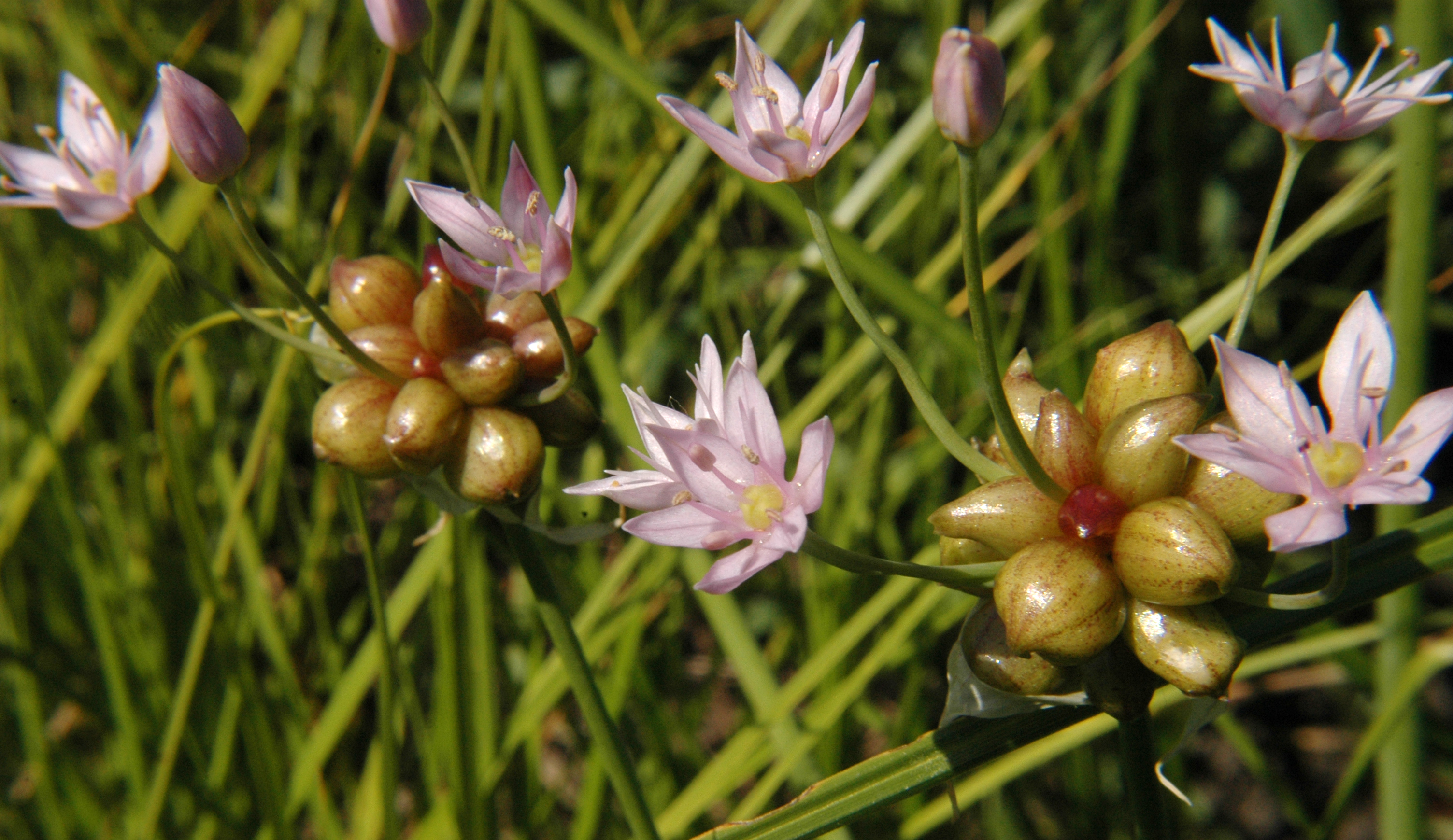
Allium canadense - The Wild Onion. (By: George F Mayfield Attribution-Share Alike 2.0 Generic)
(NOTE: If you are not interested in growing Wild Onion, but just finding the plant and using it, try going to the Nature's Restaurant Online site. Allium Leaves - Ramps, Wild Onion, Wild Garlic, Wild Leeks and Allium Bulbs - Ramps, Wild Onion, Wild Garlic, Wild Leeks.)
Allium canadense, known as Wild Onion, Meadow Garlic, Canadian Garlic, Wild Garlic and Canada Onion. As you might guess from the names, this is a native plant that has a taste that is a cross between Garlic and Onion. It is related to both.
Is the growing of this plant compatible with Natural farming, Ecoagriculture or Eco friendly agriculture, Ecological farming, Sustainable agriculture, Agroforestry or Agro-sylviculture and Permaculture: This plant can be grown using Natural farming or no-till garden methods, or conventional tilling methods. Whichever method you are using, this plant will work.
Transplanting: You should have little trouble moving it if you get a good shovel full of soil with the plant. The plant bulb can be fairly deep, so you will need to go about 25 cm or 10 inches deep. Take a shovel and dig a square around the plant the full depth of the shovel. Pry up the whole section and put in a bucket to take home. After putting it in its new home, water well. If it takes, and it should, next year it will come up and give you little bulbs you can pick off the top of the plant to start more.
Bulbs: If you find this plant in the later summer to fall with the ripe little bulbs on the top of the plant in their papery coating, pick them, take them home and plant about an inch or two under the soil and mulch. Next spring, they should come up as plants.
Soil & Site: They will need full sun. The soil needs to be loamy and rich in organic matter. These plants have a fairly narrow band of soil acidity that they like - neutral, neither acidic nor alkaline. With that in mind, it would be worth testing the soil.
Maintenance: Other than keeping them from fully drying out, there isn't a lot to do. Make sure that you always leave some plants to produce more bulbs for planting.
Harvesting: Harvest in summer. Take the whole plant.
Using: All parts of this plant are edible. Due to the size of the plant and bulb, I find the best way to use it, is pick the whole plant, wash, cut off the roots, peel the skin from the bulb and use the whole plant chopped up in any kind of cooking you would normally use onion or garlic, or serve raw whole as a snack, or chopped up in a salad. The bulb can be fairly deep in some cases - up to 10-15 cm (4 to 6 inches) under the surface of the ground.
Identification: They look like clumps of grass when not in flower - each leaf looks like a tall blade of grass.
When the plant sends up stems to flower in the spring, the first thing you see on each stem is a single flower bud top that appears to be covered by a thin, green to white, papery skin. Next, the paper like cover peels away revealing what look like (and are) smaller than pencil eraser sized onions on the stem. These little bulbs can vary in color from almost white, to greenish while, the purplish, to white with dull purple stripes. Some of them sprout a long thin leaf. Next, the actual flowers pop up from between these baby Wild Onions on stems, and when most of them are in flower, the cluster of flowers forms a dome shape. Next, when the flowers are done, the little Wild Onions dry up with a papery cover (think garlic) and fall, so you need to find them before they fall, but when they are ripe. So, depending on what time of year you see them, what is on the stalk can look quite different. Look at pictures with the pictures links below.
Mild Caution: Only eat moderate amounts, as regular, high consumption interferes with iodine absorption by the thyroid gland leading to health issues. If you have thyroid issues, I'd suggest occasional and small amounts, or passing this one by.
Serious caution: Since there are poisonous plants that can look similar, the first thing you need to make sure of is that it smells like onion or garlic or a combination of the two before you transplant one and take it home. If not sure, don't chance it, as the poisonous plants in this family don't have the onion/garlic like smell. By the way, the onion like smell from the leaves is much stronger than from the flowers, so the best way is to pick a part of a leaf, crush it a little and sniff.
Description:
- USDA Plant Hardiness Zone: 4-9 (More information on hardiness zones).
- Soil pH: 6.8-7.2
- Plant Size: Up to 30 cm (12 inches) tall - flowering stem is usually taller than leaves and is tallest part
- Duration: Perennial
- Leaf Shape: Leaves are long and thin and look remarkably like a blade of grass
- Leaf Phyllotaxis (Arrangement) on branch: (rosette) of basal leaves (leaves at the base). There are no leaves on the stem that holds the flowers.
- Leaf Size: 15-30 cm (6 to 12 inches) long, 3-4 mm (1/8 inch) wide
- Leaf Margin: Entire (smooth edged)
- Leaf Notes: Has onion like smell, leaf folds slightly along central vein, arches in a smooth curve outward or erect when smaller
- Flowers: Cluster of six petalled flowers at top of round stem that is slightly taller than the leaves. Flowers are pink, white or white/pink and about 12 mm (1/2 inch) diameter
- Habitat: Open areas of full sun, neutral alkalinity soils in almost any environment. If in some shade, they are unlikely to flower. Low grasslands, meadows, open woods, river edges, waste areas - almost anywhere they can get proper light
Web Resources:
- Recipe search on the web here (Google search) and here (Bing search).
- Pictures on the web here (Google images) and here (Bing images).
- Interactive USDA distribution map and plant profile here.
- The Biota of North America Program (BONAP) distribution map here. BONAP map color key here.
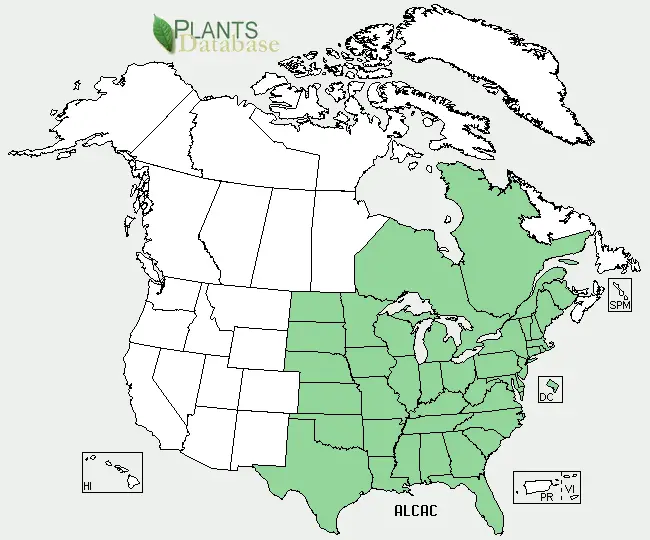
Range of Allium canadense, known as Wild Onion, Meadow Garlic, Canadian Garlic, Wild Garlic and Canada Onion. Distribution map courtesy of U. S. Department of Agriculture (USDA Natural Resources Service) and used in accordance with their policies.
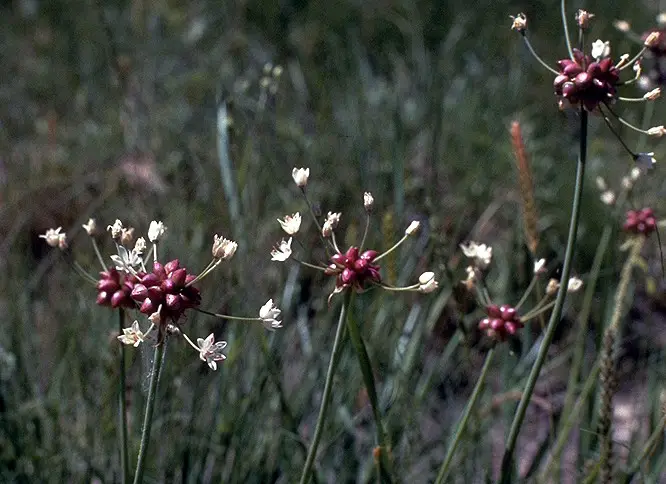
(Clarence A. Rechenthin, hosted by the USDA-NRCS PLANTS Database)
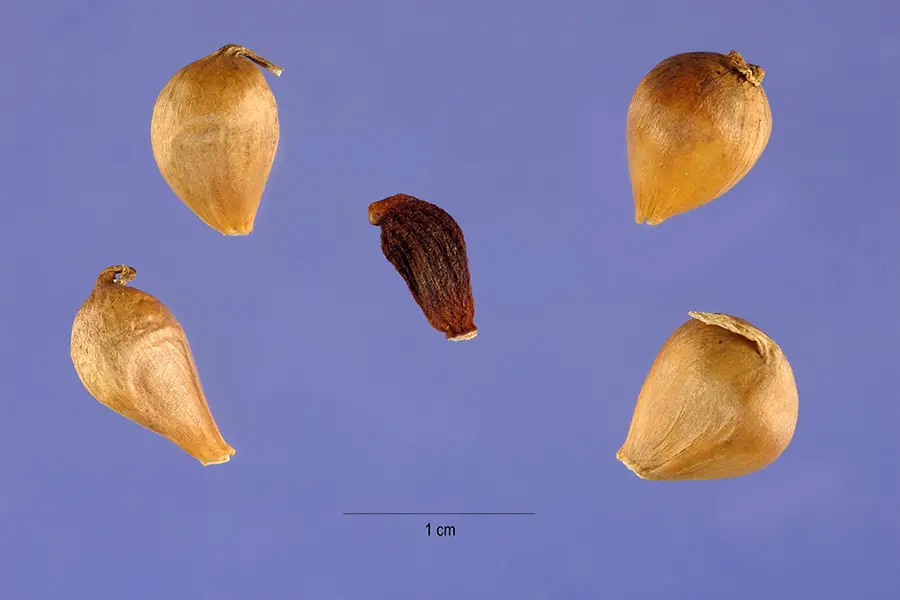
The little bulbs that can be planted. (Steve Hurst, hosted by the USDA-NRCS PLANTS Database)
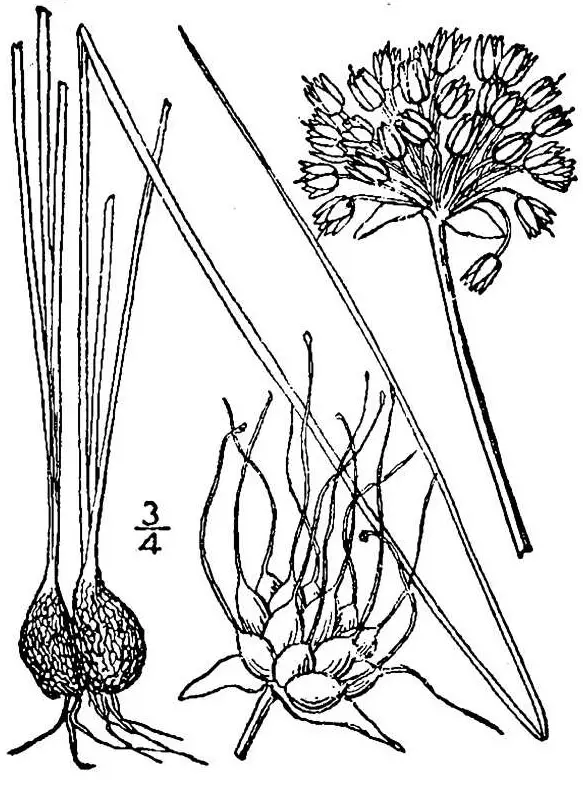
Drawing. (USDA-NRCS PLANTS Database / Britton, N.L., and A. Brown. 1913. An illustrated flora of the northern United States, Canada and the British Possessions. 3 vols. Charles Scribner's Sons, New York. Vol. 1: 499)
Search Wild Foods Home Garden & Nature's Restaurant Websites:
Share:
Why does this site have ads?
Originally the content in this site was a book that was sold through Amazon worldwide. However, I wanted the information to available to everyone free of charge, so I made this website. The ads on the site help cover the cost of maintaining the site and keeping it available.
Google + profile
